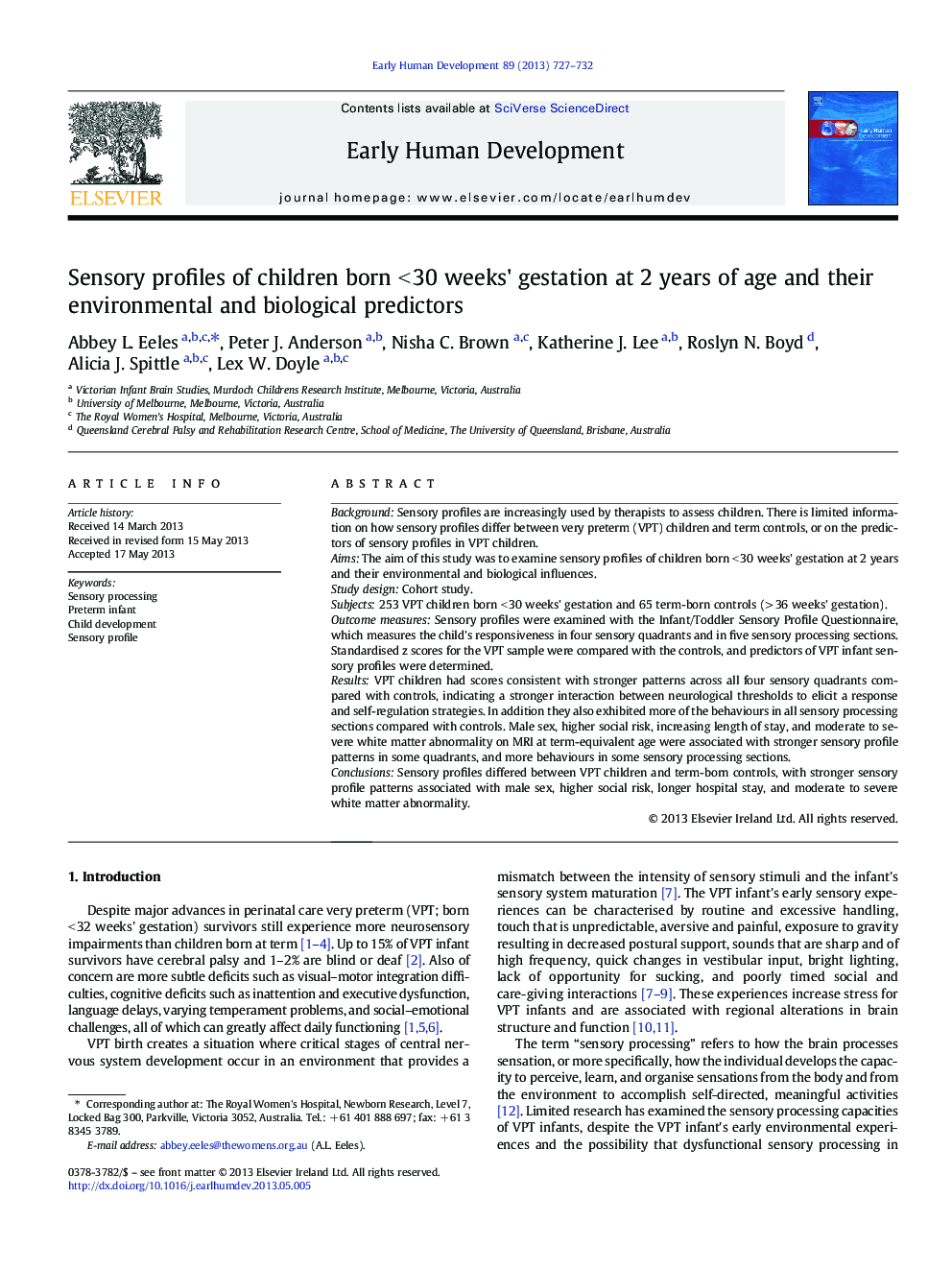| Article ID | Journal | Published Year | Pages | File Type |
|---|---|---|---|---|
| 6172315 | Early Human Development | 2013 | 6 Pages |
BackgroundSensory profiles are increasingly used by therapists to assess children. There is limited information on how sensory profiles differ between very preterm (VPT) children and term controls, or on the predictors of sensory profiles in VPT children.AimsThe aim of this study was to examine sensory profiles of children born <Â 30Â weeks' gestation at 2Â years and their environmental and biological influences.Study designCohort study.Subjects253 VPT children born <Â 30Â weeks' gestation and 65 term-born controls (>Â 36Â weeks' gestation).Outcome measuresSensory profiles were examined with the Infant/Toddler Sensory Profile Questionnaire, which measures the child's responsiveness in four sensory quadrants and in five sensory processing sections. Standardised z scores for the VPT sample were compared with the controls, and predictors of VPT infant sensory profiles were determined.ResultsVPT children had scores consistent with stronger patterns across all four sensory quadrants compared with controls, indicating a stronger interaction between neurological thresholds to elicit a response and self-regulation strategies. In addition they also exhibited more of the behaviours in all sensory processing sections compared with controls. Male sex, higher social risk, increasing length of stay, and moderate to severe white matter abnormality on MRI at term-equivalent age were associated with stronger sensory profile patterns in some quadrants, and more behaviours in some sensory processing sections.ConclusionsSensory profiles differed between VPT children and term-born controls, with stronger sensory profile patterns associated with male sex, higher social risk, longer hospital stay, and moderate to severe white matter abnormality.
